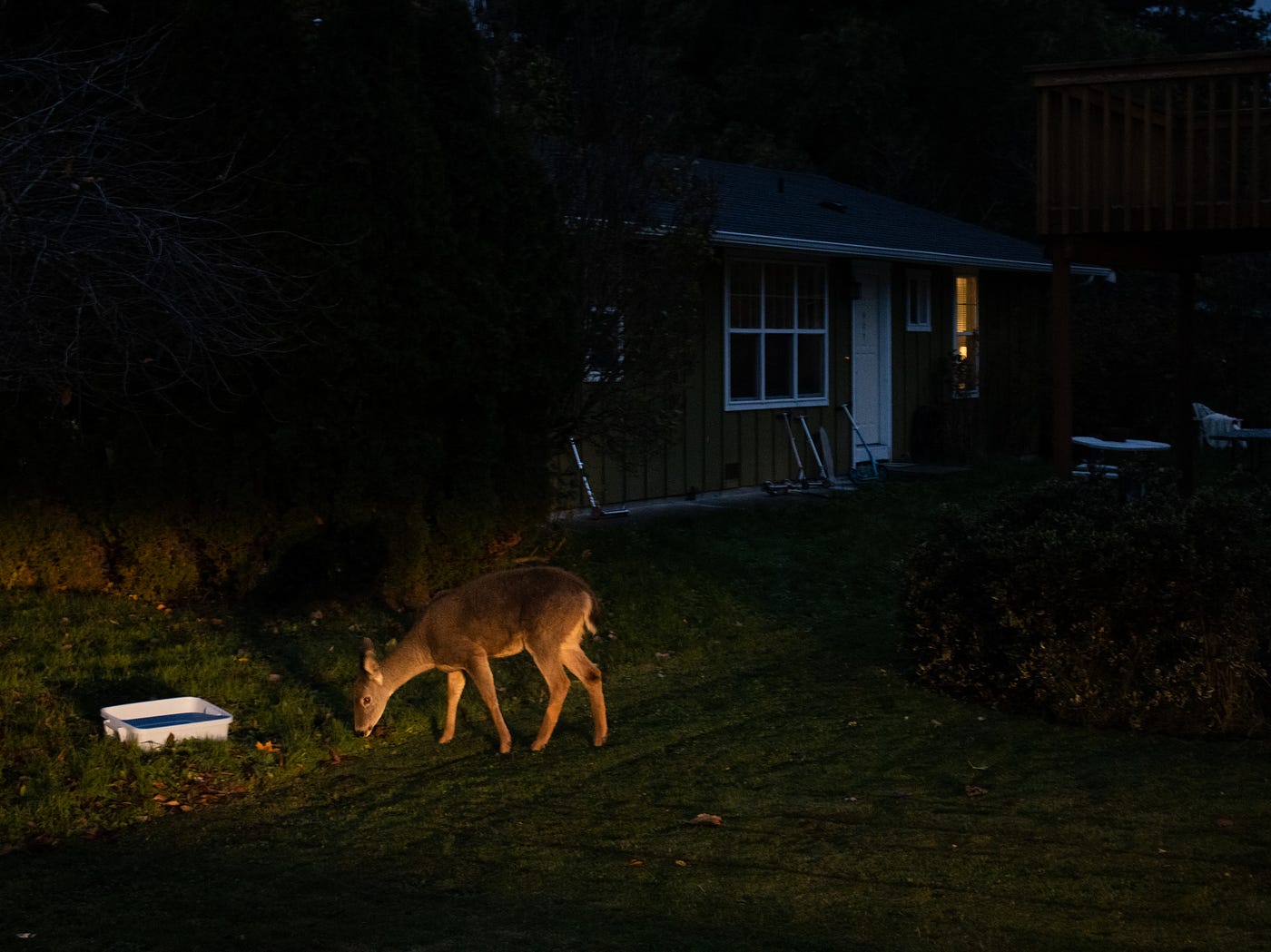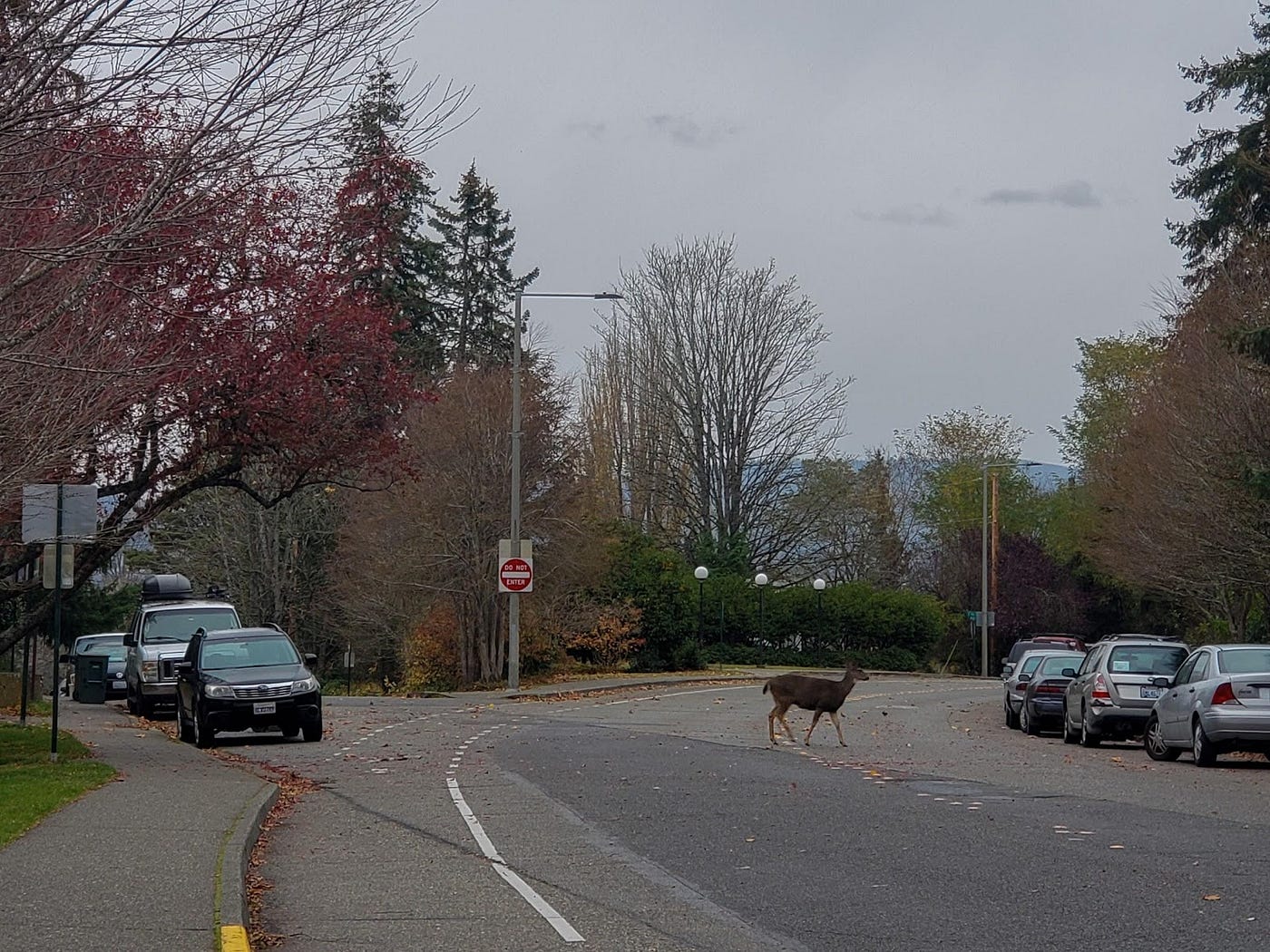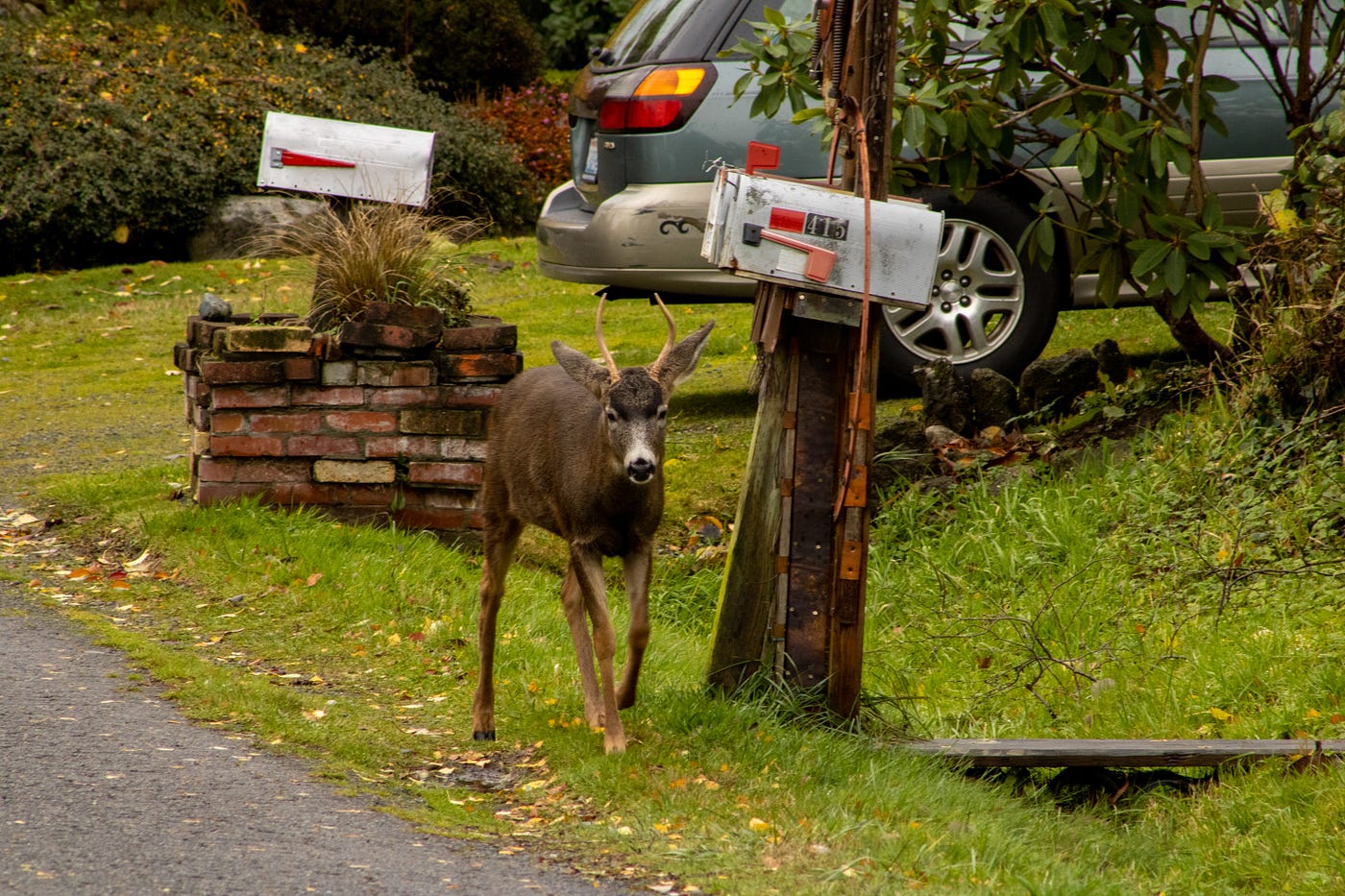What Kind Of Animals Alive In Bellingham
Almost and Deer
As the deer population increases in the suburbs of Bellingham, Washington, a more threatening presence follows close backside, setting locals on border.
Story and Photos by Thomas Hughes

Alexarc Mastema, a resident of the Sunnyland neighborhood in Bellingham, Washington, ofttimes wakes to find a family of black-tailed deer sleeping in his front k. When slipping past them to get to his motorcar, merely a few steps separating them, the deer don't carp getting up.
Encounters like this may come up as a surprise to those living in other parts of Washington, simply for locals of Bellingham this is nothing out of the ordinary. Mastema is 1 of many residents who report Columbian blackness-tailed deer, the most common species of deer in the state, frequenting Bellingham neighborhoods. It is not uncommon for residents, Mastema included, to report the same deer returning to their neighborhoods and yards routinely.
"I would wake upwardly in the morning, look outside and they were sleeping in the yard. Or in the evenings, I would be out having my evening beer and either the mom or the brothers would come in and they would simply settle down and just bed down for the afternoon," said Mastema.

While some Bellingham residents don't mind the deer visiting, others see the animals as a nuisance. In 2017, complaints about the growing deer population prompted the city to issue an ordinance prohibiting the intentional feeding of deer in Bellingham.
For Sunnyland resident, Amanda Norenburg, the problem was deer snacking on her garden.
Norenburg started her vegetable garden in 2008, merely the deer headaches only started near five years ago. It has grown worse ever since. This summer, Norenburg put upwardly a two-meter-tall fence of plastic netting in the hopes of stopping the deer. It didn't work.
"They didn't really jump over it, merely they did effigy out that they could scoot under it," Norenburg said. She concluded upwardly taking down the argue.
The animals aren't just garden pests. Deer tin can be unsafe to people and pets.
Trisha Miller, a Bellingham local, watched a deer impale her chihuahua this summertime. Miller and her husband had seen deer interact with their dog before and idea nothing of information technology when their dog went out to greet a buck in their yard.
"We thought that they were going to play again, but all of a sudden [the deer] only came upwards on its hind legs and came downwardly really fast and … only took her out so quick," she said.
In add-on to these bug, the increased deer population in Bellingham has given rise to some other trouble that apace captured the public'south attending. In the past couple years, there take been cougar sightings around the urban center, with footage taken as recently as this Oct in the Barkley and Whatcom Falls neighborhoods.
"Information technology's important for people to understand that an increased amount of cougar sightings does not necessarily mean an increased corporeality of cougars," said Robert Waddell, a district wild animals biologist with the Washington Department of Fish and Wildlife (WDFW).
That being said, in that location is a tendency of cougars moving in closer to suburban areas, according to Waddell.
"Part of that is nosotros're moving further and further into the cougar habitat," he said.
As territorial predators, juvenile male cougars must choose hunting grounds at around a year and a half in historic period. Occasionally these cougars are forced into less platonic territory, like the outskirts of a suburb, by competing males.
"One time that cougar moves in there, it'southward got an abundance of casualty from raccoons, to deer that might be there, to domestic pets," said Waddell. He said because of this, there could very well be a correlation between the corporeality of deer that live in Bellingham and increased cougar sightings in suburban areas.
"The key thing is habitat," Waddell said. Developing further into the habitat of these creatures could also be a major factor in the increment of deer activity in the suburbs of Bellingham, co-ordinate to Waddell. His bureau has seen blackness-tailed deer populations declining in the forested areas of Western Washington, however an increased presence in urban and agricultural areas.

There is a hope that post-obit the transfer of thousands of acres of land around Lake Whatcom from the State Department Natural Resources to Whatcom County, the land can be used to support growth of forests that could better cater to the deer population, according to Mark Gardner, a legislative policy analyst for the Bellingham City Council.
All the same, except for the 2017 feeding ban, the city isn't taking further steps to command the city's deer population.
"[The ordinance] really leans more towards teaching, not enforcement, although there is a penalty," said Gardner.
Waddell stressed the importance of educating people about deer, especially those living in suburbs. Residents should not feed wildlife and should know how to protect their holding. The Fish and Wildlife Department has a webpage detailing means to prevent conflict with deer, including putting up deer fences and applying deer repellent.
It is also important to know that deer birthing seasons are during the early summertime months, and that the animals will be more aggressive when protecting their young, co-ordinate to Waddell. Keeping small pets on leashes or supervising them closely when in that location are deer around are the best means to ensure they don't make it damage's way.
"Agreement how to coexist with the animals is crucial. Nosotros have deer here, and we are going to have deer in Bellingham," said Waddell.
Thomas Hughes is a senior who is working towards a double major in visual journalism and music.
Source: https://theplanetmagazine.net/near-and-deer-6ae743e38433
Posted by: giesenappy1975.blogspot.com

0 Response to "What Kind Of Animals Alive In Bellingham"
Post a Comment